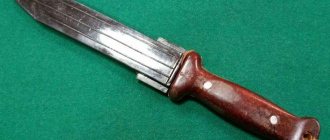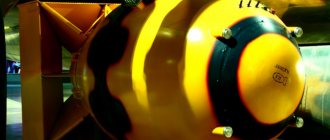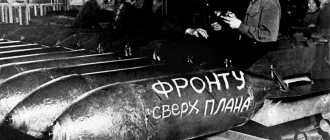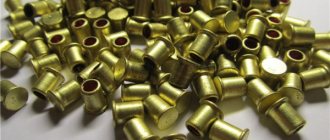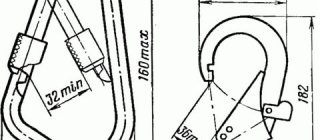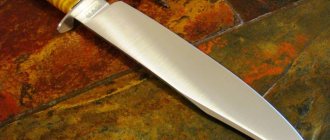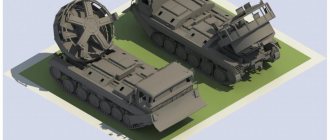Do you know how many lines a paratrooper's parachute has? What are they made of? You will find answers to these and other questions in the article. A parachute is a device made of fabric, made in the form of a semicircle, to which a load or suspension system is attached with slings. It slows down the movement of an object in the air. Parachutes are used to delay the movement of winged vehicles during landing and jumping from fixed objects (or from aircraft) for the purpose of safe descent and landing of cargo (people).
Varieties
Many people are interested in knowing how many lines a paratrooper’s parachute has. At first, air umbrellas were used to softly land a person on Earth. Today they are used to save people and drop them from the air. In addition, they serve as sports equipment.
For landing cargo and cars, cargo sky umbrellas were invented. Several such devices can be used simultaneously to land heavy equipment. Rescue systems on light aircraft are a variation of these. Such devices consist of a parachute and forced-extension accelerators (rocket, ballistic or pyrotechnic). When a dangerous situation arises, the pilot activates the rescue device and the plane lands on the ground using a parachute. These techniques are very often criticized.
Small stabilizing parachutes (also called pilot chutes) help regulate body position during a relaxed descent. Deterrent air umbrellas were developed to reduce braking distances on transport and military aircraft and to stop cars in drag racing. For example, Tu-104 aircraft and early Tu-134 models were equipped with such devices.
In order to reduce the speed of a spacecraft when landing on a celestial object or while moving through the atmosphere, parachutes are also used. It is known that ordinary round sky umbrellas have been developed for landing people and cargo. There are also round parachutes made in the form of a Rogallo wing, with a retracted top, ribbon parachutes for supersonic speed, parafoils - wings in the shape of an ellipse or rectangle and many others.
Mechanism of flight and parachute deployment
After landing, the paratrooper must calculate 5 seconds. It cannot be considered a standard method: “1, 2, 3...”. It will turn out too quickly, the real 5 seconds will not pass yet. It’s better to count like this: “121, 122...”. Nowadays the most commonly used counting is starting from 500: “501, 502, 503...”.
Immediately after the jump, the stabilizing parachute automatically opens (the stages of its deployment can be seen in the video). This is a small dome that prevents the paratrooper from spinning while falling. Stabilization prevents flips in the air, in which a person begins to fly upside down (this position does not allow the parachute to open).
After five seconds, stabilization is completely removed, and the main dome must be activated. This is done either using a ring or automatically. A good paratrooper must be able to adjust the opening of the parachute himself, which is why trained students are given kits with a ring. After activating the ring, the main dome opens completely within 200 meters of fall. The duties of a trained paratrooper paratrooper include camouflage after landing.
Types of army "air umbrellas"
Every soldier should know how many lines a paratrooper's parachute has. Army sky umbrellas come in two types: square and round. The canopy of a landing round parachute is a polygon, which, when filled with air, takes on the appearance of a hemisphere. The top has a cutout (or less dense fabric) in the center. Such systems (for example, D-5, D-10, D-6) are distinguished by the following altitude characteristics:
- normal working altitude – from 800 to 1200 m;
- maximum release height – 8 km;
- the lowest ejection level is 200 m with a descent on a filled dome of at least 10 seconds and stabilization for 3 seconds.
Round parachutes are difficult to control. They have approximately equal horizontal and vertical speed (5 m/s). The weight of these devices is as follows:
- 13.8 kg (D-5);
- 11.7 kg (D-10);
- 11.5 kg (D-6).
Square parachutes (for example, the Russian “Listik” D-12, T-11 USA) have additional slots in the arch, with the help of which the paratrooper controls horizontal movement. They also improve maneuverability. The horizontal speed of the products is up to 5 m/s, and the descent speed is up to 4 m/s.
Recommendations for putting the system into operation
The characteristics of the parachutist’s actions from the moment he boards the plane are as follows:
- Before takeoff, remove the stabilizing parachute chamber. Connect it with a carabiner to a cable or other device that performs similar functions.
- Hearing the command “Get ready,” rise from the seat and turn around to face the hatch.
- Grab the handle on the right flap of the backpack of the person standing in front. Pull it lightly and tuck the manifested slack in the link inside.
- Take the jump. When the main parachute deploys, remove the manual deployment link into the designated pocket on the harness.
- Having dropped to 250–300 m, turn around and face exactly in the direction of the drift. To reduce horizontal speed, pull the rear lines down.
In flight, you can use the lines to change the direction of movement. This allows the skydiver to land in a given location or simply choose the safest area. The control system allows you to move back, forward, turn right, left. To do this, simply pull the straps from the appropriate side, changing the position of the canopy.
By pulling the straps from the desired side, you can change the position of the canopy
D-6
Now let’s find out how many lines there are in the D-6 paratrooper’s parachute, which was developed by the Research Institute of Parachute Engineering (Aviation Equipment holding). It is used for combat and training jumps from transport aircraft. Previously, it was used by the airborne troops of the USSR.
Today, the modified D-6 device of the fourth series, along with the new D-10, is used by flying clubs and airborne forces. Its canopy correction system consists of lines, a link stabilizer and an apex base. Along the lower edge of the arch, 16 ropes from ShKP-200 nylon rope were threaded and stitched under the reinforcing radial tapes. The length of the outer lines, placed in a free state on each loop, from the lower edge of the top to the stabilizer loops is 520 mm, and the middle ones are 500 mm.
Pre-war time
Until the thirties of the last century, very few people jumped with a parachute in the USSR.
The young Soviet state could not organize industrial production of percale fabric in the required quantities, which meant it could not produce parachutes. This fabric—“aviation diaper,” as it was affectionately called—was needed by too many industries in the country. First of all, aircraft designers - for the manufacture of wings and fuselage elements. The frame was wrapped in several layers of percale and impregnated with special varnishes, obtaining a light and fairly durable surface. When enough percale began to be produced, future paratroopers also received their share. The density, strength and lightness of this type of cotton fabric is achieved through the use of untwisted threads and special weaving. In order not to reinvent the wheel of the parachute, the USSR bought a license to produce the most common American parachute at that time, the Irvin company.
Even then, the Yankees not only became a monopoly in their country, but also successfully supplied parachutes to the military of other countries - for example, Great Britain. This is how the PD-6 parachute appeared in the Union in the thirties, which became the landing standard for many years.
Nuances of D-6
The base of the D-6 dome is made of nylon material art. 560011P, and the overlay is made of the same fabric, but has art. 56006P. Between slings No. 15A and 15B, 1A and 1B, on the base of the dome there are slots measuring 1600 mm, designed to rotate the arch during descent. At the top there are 30 cables made from ShKP-150 nylon rope. 7 slings are attached to the free edges of the suspended structure No. 2 and 4, and 8 to No. 1 and 3.
The length of the slings in a free position from the half-ring buckles to the lower edge of the dome is 9000 mm. Marks are drawn on them at a distance of 200 mm from the lower edge of the arch and 400 mm from the half-rings-buckles of the free ends. They make the installation of canopy cables super easy. Coordinating ropes are sewn to slings No. 15A and 15B, 1A and 1B. The dome has an area of 83 square meters. m.
The control lines are made of red nylon rope ShKPkr. They are passed through rings sewn to the inside of the free ends of the hanging structure.
Little sideshow
What is required from a landing parachute? Firstly, maximum reliability and operation at any time and in any situation. Secondly, ease of installation, ease of testing... rest assured, if a novice paratrooper has the opportunity to do something wrong, he will definitely take advantage of it.
Don't forget about the price. Most often, after landing on the battlefield, the troops throw their parachutes, rather than take them with them. Therefore, this thing is largely disposable. While training jumps are being made, nothing yet; and like a serious landing, there’s a direct scar on the heart of the captain, the manager of the property.
There is a difficult question: do paratroopers need to control their parachute? There is no consensus on this matter.
I would like to find personnel after landing on the ground, and not hanging by parachutes on trees and poles, so the ability to control is very necessary.
But give the landing parachutes a decent horizontal speed - and half of the personnel will incorrectly determine the wind, stand on it and get injured during landing. And who needs it?
As a result, they decided to use uncontrolled parachutes for a mass landing - to land in the wind, watching where you land. And for more experienced ones - controlled ones, requiring more serious training, landing against the wind, and so on.
In general, a landing parachute does not require virtually any serious training from the paratrooper. You just need to fall out of the plane in a heap; the system itself will take care of opening the dome. All that remains is to bring your legs together at the moment of landing.
D-10
Now we’ll tell you how many lines the D-10 paratrooper’s parachute has. It is known that this sky umbrella replaced the D-6 parachute. Its squash-shaped dome with a beautiful appearance and improved characteristics has an area of 100 square meters. m.
The D-10 device was made for the landing of novice paratroopers. With its help, you can perform combat and training jumps from transport and military aircraft An-26, An-22, An-12, Il-76, An-2 aircraft, Mi-6 and Mi-8 helicopters. During the release, the flight speed is 140-400 km/h, the lowest jump height is 200 m with stabilization for 3 seconds, the maximum is 4000 m with a flight weight of a person of 140 kg, the descent occurs at a speed of 5 m/s. The D-10 parachute has different line lengths. It weighs little and has many control possibilities.
Every serviceman knows how many lines there are in the main parachute of a D-10 paratrooper. The device has 22 ropes with a length of 4 meters and 4 cables connected to the loops of the dome slots, 7 m in size, made of ShKP-150 nylon rope.
The parachute is also equipped with 22 additional external lines made from ShKP-150 harness, 3 m long. In addition, it has 24 internal additional ropes made from ShKP-120 harness, 4 m in size, attached to the base lines. A pair of internal additional slings is attached to cables 2 and 14.
Rules for deplaning
The paratroopers disembark from the cabin in a certain order. In IL-76 this happens in several threads. For disembarkation there are two side doors and a ramp. During training activities, they prefer to use exclusively side doors. Disembarkation can be carried out:
- in one stream of two doors (with a minimum of personnel);
- in two streams from two doors (with an average number of paratroopers);
- three or four streams of two doors (for large-scale training activities);
- in two streams both from the ramp and from the doors (during combat operations).
The distribution into streams is done so that the jumpers do not collide with each other when landing and cannot get caught. There is a small delay between threads, usually several tens of seconds.
Spare parts
How many lines does a paratrooper's reserve parachute have? It is known that the design of the D-10 allows the use of spare air umbrellas of the 3-5, 3-4, 3-2 type. The opening of the double-cone lock is secured by parachute devices PPK-U-165A-D, AD-ZU-D-165.
Let's consider a reserve parachute device 3-5. It consists of the following parts: a canopy with slings, a suspended intermediate system, a backpack, a manual opening link, a parachute bag and passport, and auxiliary parts.
A reserve parachute helps create a safe rate of descent (landing). This is a load-bearing surface made in the form of a framed surface layer with load-bearing parts that connect the top to the suspended intermediate system.
The parachute has a round arch with an area of 50 square meters. m, which consists of four sectors made of five nylon panels. These components are sewn together with a lock stitch.
24 slings made of ShKP-150 nylon rope are attached to the dome loops. Their longitude in a free position from the lower edge of the arch to the semi-rings of the suspended intermediate system is 6.3 m. To simplify the installation of the arch, the 12th line is made of a red cord (or an identifying red sleeve is sewn onto it).
On each rope, at a distance of 1.7 m from the lower edge of the arch, there is a black mark indicating the place where the slings are placed in the cells of the backpack.
Safety precautions
One of the basic safety requirements for a skydiver is to inspect the entire parachute system before jumping. The correctness is sequentially checked:
- adjusting the suspension system, while the ends of the adjusting tapes are removed under the main ones;
- fixing the belay device and its time and altitude settings;
- fastening the ring and cable, allowing you to open the main dome;
- closure of a double-cone lock;
- sealing the removable honeycomb.
Next, you need to assess the condition of the reserve parachute. First of all, check how the ends of the harness are connected to its mounting brackets, and how securely the backpack with it is attached to the harness. It is also monitored how the pins for the manual deployment of the reserve parachute are located, and whether they are present at all.
Upon completion of the inspection, the presence and accuracy of the entries in the card, which replaces the parachute passport during the flight and jump, is checked. Place it in a special pocket on the backpack.
One of the basic safety requirements for a skydiver is to inspect the entire parachute system before the jump.
How to spot a fake paratrooper?
- “Of the five thousand residents of Rostov celebrating Airborne Forces Day, only one and a half thousand actually served in the airborne forces”
Today is Airborne Forces Day!
Airborne Forces Day!
Day of the Paratroopers or “Landing Forces”!
Of course, every year, the “Landing Forces” are becoming quieter. Grandiose fights and showdowns with the “Watermelon” mafia in the markets are slowly becoming a thing of the past. Still, our country is becoming more and more tough on all kinds of lawlessness, on the one hand, on the other hand, we are fighting in some places around the world. And it has long been noticed that if the country’s Army is conducting real military operations, fewer people bathe in fountains and go to protest rallies.
But I am sure that on August 2 people in blue berets and vests will walk the streets.
Therefore, the question is always relevant: how to distinguish a real paratrooper from one who simply puts on a vest and takes it, or maybe even wears a “Throwaway” tattoo, drinks in the fountain and tells army stories.
By the way, this is what distinguishes Muscovites. Anyone who served in the Airborne Forces knows that rotten soldiers are more often found among those drafted from Moscow...
Of course not all, there are many excellent fighters among the guys from Moscow. I myself had a “friend” from the Capital in the army.
But honestly, everyone knows that among the residents of Moscow there are “not very good comrades”, more than from the outskirts of the country...
In our company there was a “Muscovite”, the only communist among the soldiers. By the way, he was sent to the army after “shar” (shar or sharatsya is another slang expression in the army and airborne forces) in civilian life. He was the released secretary of the Komsomol, I don’t remember where. There was a delay, but he got pregnant and was sent to serve in the elite troops. I'm sure he bathes in the fountain and drinks in a beret and vest.
But for every real paratrooper there are several fake ones. So let's start learning to identify the deceiver. I will give below a few questions and some detailed answers to these questions.
Knowing the answers to these questions, you can identify a fake “Landing”!
The answer to the Airborne Forces or DShB does not work, just like the DMB (this is demobilization!). As well as the place of service, such as Pskov, Ryazan, and so on. Maybe he's heard enough army tales from his older brother or neighbor. By the way, addition, in the military camp of the airborne unit there may even be construction battalions. For example in Pskov. If anyone remembers, soldiers from the construction battalion went to the photographer and took photos in a “demobilization parade with axels” and a blue beret. They sent us home and boldly told us that they were serving in the Airborne Forces. Of course they did it secretly. The construction battalions were not very fond of landings. In Pskov, there was a garrison lip (gaubwatch), this is a place where soldiers and officers are detained for minor and major violations of military discipline. The lip was guarded by the guard of the Pskov division
Each military unit has a number. The unit number is hammered into the soldier's head. As well as the number of the machine gun and military ID. I served almost 30 years ago and still remember.
VUS, this military registration specialty is written on the Military ID. If such a Landing is shown to you by his military officer, then looking at his VUS, you will understand who he really is. “Military specialty (MRS) is an indication of the military specialty of an active or reserve service member of the Russian Armed Forces and other troops and formations. Information about the military service is entered into the military ID. All VUS are divided into groups; the VUS designation itself is a multi-digit number (for example, VUS-250400).
Possible list of military specialties
Apparently, there are no open sources containing decryption of the codes of all currently operating VUS: the VUS catalog is a document of the Russian Ministry of Defense with the secrecy level “Secret”.
The first three digits of the VUS for warrant officers, sergeants, foremen and soldiers indicate specialization (VUS code), for example:
100 - rifle 101 - snipers 102 - grenade launchers 106 - military reconnaissance 107 - special forces units and units 122 - BMD 461 - HF radio stations 998 - without military training, fit for military service 999 - the same thing, only LIMITEDly fit for military service etc.
The following three digits indicate the position (position code):
97 - ZKV 182 - KO 259 - MV 001 - battery operator, etc.
The letter at the end indicates “special characteristics of the service”:
A - without any B - missile weapons specialists D - Airborne Forces K - crew of surface ships M - MP P - V.v. R - PV (FPS) S - Ministry of Emergency Situations (?) T - construction units and divisions F - Special Forces, etc. E - Flight personnel for warrant officers, sergeants, soldiers
4. How many times did you jump? Usually you will hear mind-boggling numbers of 30-40-50, or maybe 100 jumps. “The annual norm for a conscript soldier is 12 jumps, 6 in each training period. In general, parachute training is a mandatory condition of service in the Airborne Forces. Everyone is parachuted - from the general to the private" - interview with Shamanov. For those who don’t know, Vladimir Shamanov is the Airborne Forces Commander and Colonel General. Even in the USSR, jumping more than 20 times during military service was problematic. Because the soldier went on guard duty (this is when a man with a gun buries “Guba”, warehouses and parks with equipment), went on duty in the park (where the equipment is located), and finally on duty in the dining room (where he peeled potatoes, set the table and washed the dishes), stood “on the bedside table” (company duty), and so on... In the army there was self-service, the soldier did everything himself and no one freed him to make the jump. Of course, there were sports companies in the army. These are free units where soldiers mainly train and perform for the unit. For example, where I served, there was a “squadron”. Conscripts were skydiver athletes who did nothing but jump and compete. But this is a separate caste, they even wore a unique uniform, officer’s greatcoats and shoulder straps of conscripts. The beginnings of a contract army. I'm not talking about contract sergeants and warrant officers. They were already professional soldiers then. But an ordinary paratrooper did not jump very much. Just like now. Only “for demobilization” could they buy a “nausea” (a parachutist badge in the form of a dome with a pendant in the form of numbers according to the number of jumps) with a large number of jumps.
5. Did you jump in combat? Many fake paratroopers do not know that the Airborne Forces and special forces in every possible way can jump in several options.
I will give the simplest ones:
Without weapons and RD (Paratrooper's Backpack)
Rescue pack
Kotelnikov did not see his task in inventing the parachute as such - by that time they had already been invented and were even used in aviation. But the first generation parachute systems were bulky structures that required a significant investment of time to use them, and the death of Captain Matsievich proved that the pilot may not have time to do this. This means that it was necessary to come up with a parachute that the pilot could always have with him and with which he could simply fall out of the airplane, even if it was falling apart, and have time to deploy the canopy. This could be done only in one case: if the parachute was compactly packed and opened with one single movement.
Gleb Kotelnikov and his RK-1 parachute, put on a dummy, before testing, June 6, 1912
Source: aviaru.rf
Gleb Kotelnikov used thin, durable silk as the material for his parachute, since only such fabric could be folded as compactly as possible. The next task was to find a system that would allow the folded parachute to remain with the pilot at all times, as the inventor envisioned. At first, Kotelnikov placed the rescue system in a cylindrical helmet placed on the pilot’s head: from there the folded canopy was thrown out by a special spring. Tests on a doll dropped from the roof of the Kotelnikov dacha in Strelna proved that the system works perfectly. But another problem arose: the puppet pilot survived the jerk of the opening canopy without problems, but a living pilot could at least have had his helmet torn off, or even suffered a head injury.
Then a classic solution for today was found - a back pack, which Kotelnikov first made from wood and then from aluminum. This mounting option made it possible to divide the parachute lines into two groups, which has since become a classic: with this design it turned out to be much easier to control the canopy. On November 9, 1911, Gleb Kotelnikov received a security certificate for his invention in Russia, that is, a document confirming the submitted application for a patent, and in the spring of 1912, a French patent. A year later, the inventor gave his brainchild the official name RK-1, where the letter “R” meant “Russian”, “K” - “Kotelnikov”, and the number was the serial number of the design.
A pilot inspects a PL-1 parachute before a flight, mid-1930s
Source: aviaru.rf
Interaction of parts
If the main parachute does not work, the paratrooper must sharply pull out the pull ring of the manual opening element with his hand. As a result, the pockets of the exhaust device located around the pole gap, finding themselves in the air flow, pull out the arch and lines of the reserve parachute from the backpack and remove the person from it.
Under the influence of air flow, the canopy of this device fully opens, ensuring a normal landing.
soldierweapons.ru
Used with main parachutes: D-6 series 4, D-5 series 2. Reserve parachute for landing and training systems.
Rice. 1. Reserve parachute Z-5
The parachute is quickly and conveniently mounted and dismantled to the main parachute suspension system. Placing the parachute at the front allows it to be easily deployed with either hand by pulling the manual deployment link and for visual control.
Operational features:
- Possibility of working together with filled canopies of parachutes of the D-5, D-6, D-1-5, T-4 types;
- Reliable operation in case of abnormal operation of the main parachute type T-4, UT-15 when the reserve parachute is put into operation after the main parachute canopy is completely disconnected.
Options
The reserve parachute Z-5 is designed to rescue a paratrooper in case of failure of the main parachute and for training in its use.
Tactical and technical data of the parachute
1. With a total weight of a parachutist with parachutes of 140 kg, the parachute provides:
- reliable operation at an altitude of up to 1000 m when put into operation at a horizontal flight speed of 350 km/h according to the instrument, with a delay in opening the backpack of 3 s or more, while the maximum overloads occurring at the moment of filling the canopy do not exceed 16 g;
- reliable operation in case of abnormal operation of the main parachute type T-4, UT-15;
- reliable operation in the event of abnormal operation of all types of parachutes when the cover does not come off the main canopy of the parachute; pinching the lower edge of the main parachute canopy; overlapping the main canopy with slings; also not disconnecting a filled working stabilizing parachute only of the “Lesnik” type, D-6 and D-5 series 2 (when its lower edge is removed from the main parachute pack by 2.5 m);
- no folding of the parachute canopy when working together with fully filled canopies of parachutes of the T-4, Lesnik, D-5 series 2 and D-6 types;
- the minimum safe altitude for use from a horizontally flying aircraft at a flight speed of at least 120 km/h with immediate deployment of the parachute is 100 m. In this case, the descent time on a fully filled canopy is at least 4 s;
- vertical speed of descent, normalized to the standard atmosphere, measured in a section of 30-35 m from the ground, with a mass of a parachutist with parachutes of 120 kg - no more than 7.5 m/s and with a mass of a parachutist with parachutes of 140 kg - no more than 8.5 m /With;
- insertion of the parachute with the right or left hand;
- the force required to pull out the ring is no more than 16 kgf;
- speed and ease of installation of a reserve parachute to harness systems with quick-release fastening buckles (brackets) and its dismantling.
2. Overall dimensions of the stowed parachute, mm:
- length - 405+10;
- width - 230+10;
- height - 180+10.
3. The weight of the parachute without a carrying bag is no more than 5.2 kg.
Tactical and technical data of parachute parts
The Z-5 parachute kit includes the following main parts:
Rice. 2. Main parts of the Z-5 parachute
1. The dome with an area of 50 m² has a round shape and is made of nylon fabric art. 5601Ш and consists of four sectors.
The first and fifth panels are made of white or dyed nylon fabric art. 56011AP high air permeability. In the center of the dome there is a pole hole with a diameter of 700 mm, covered on the outside by eight pockets of; nylon fabric art. 56005cr.
At the lower edge there are 24 loops for attaching slings, 6300 mm long, made of nylon cord ShKP-150, and in the center of the dome there is a bridle made of nylon cord 10KP-Okr or nylon tape LTKkrP-25-200.
At a distance of 1400 mm from the bottom edge, marks are placed on the slings to stop laying the slings into honeycombs.
2. The intermediate suspension system, made of nylon tape LTK-44-1600, consists of two straps connected to each other by a jumper. Nylon tape LTKMkrP-27-1200 in two folds is used as a jumper.
Attaching an intermediate harness system of a reserve parachute to one mounting bracket is prohibited.
For ease of stowing the parachute, the outer side of the straps has the inscription “left” and “right”.
3. An envelope-shaped satchel made of nylon avisent, has four valves - two side (left and right), top and bottom. The double bottom of the backpack is reinforced with a stiffening frame. The length of the flexible hose is 380 mm, the length of the backpack rubbers: top valve - 260 mm, side valves - 370 mm, bottom valve - 425 mm.
4. The exhaust ring with two studs is metal. For ease of grip, the handle of the ring in relation to the base is bent by 60° and thickened. The cable studs are located one from the other at a distance of 90 mm. The length of each pin is 32 mm. The length of the cable from the stop to the last pin is 615 mm.
5. A rectangular carrying bag, sewn from nylon avisent art. 56039. Dimensions 410X260X380 mm.
Carrying bag from avisent B art. 6700 has dimensions 510X260X380 mm,
6. A passport is a necessary accessory for a parachute.
How long does it take to fly with a parachute from an altitude of 4000 meters?
A free fall when jumping from a height of 4000 meters lasts about a minute, i.e. for a whole minute the guest will fall, fall, fall and fall again and continue to fall.
Interesting materials:
What weight should a guy be with a height of 175? What should the model weigh? What should quince taste like? What should the leg length be? What kind of hair tie should be? Which oak is best for a barrel? Which oak is best for cognac? What engine is installed on the Kraz? What engine does the Chevrolet Niva have? What engine does the gazelle business have?
